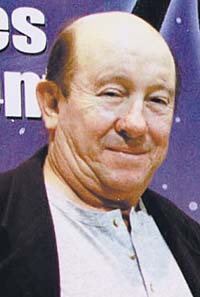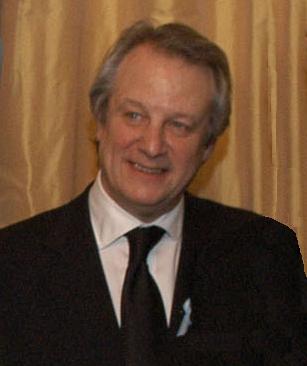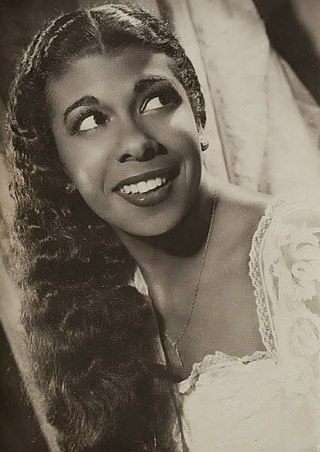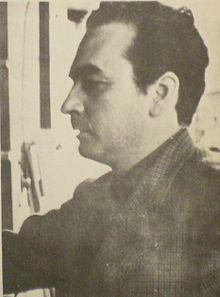
The Teatro Colón is a historic opera house in Buenos Aires, Argentina. It is considered one of the ten best opera houses in the world by National Geographic. According to a survey carried out by the acoustics expert Leo Beranek among leading international opera and orchestra directors, the Teatro Colón has the room with the best acoustics for opera and the second best for concerts in the world.

The culture of Argentina is as varied as the country geography and is composed of a mix of ethnic groups. Modern Argentine culture has been influenced largely by the Spanish colonial period and the 19th/20th century European immigration, and also by Amerindian culture, particularly in the fields of music and art. Buenos Aires, its cultural capital, is largely characterized by both the prevalence of people of Southern European descent, and of European styles in architecture. Museums, cinemas, and galleries are abundant in all of the large urban centers, as well as traditional establishments such as literary bars, or bars offering live music of a variety of music genres.

Ulises Dumont was a prolific Argentine film actor, credited with over 80 appearances in film and countless others in theatre and television from 1964 until his death in 2008.

Osvaldo Bayer was an Argentine writer and journalist. He lived in Buenos Aires. In 1974, during the presidency of Isabel Perón, he went into exile, residing in Linz am Rhein, Germany, throughout the National Reorganization Process dictatorship (1976–1983).

Lito Cruz was a prominent Argentine stage director and motion picture actor.

José Carlos "Pepe" Soriano was an Argentine actor, director, and playwright.

Carlos Gorostiza Rodríguez was an Argentine playwright, theatre director, and novelist. His seminal work El puente debuted in 1949 and he garnered numerous awards for his proceeding works. He later was Secretary of Culture between 1983-86.

Osvaldo Dragún was a prominent Argentine playwright and the director of Cervantes Theater.

The Argentine Open Theatre was an independent theatre movement in Buenos Aires, Argentina.

Jorge Marrale is an Argentine actor.

Buenos Aires is one of the world's capitals of theatre. The Teatro Colón is a national landmark for opera and classical performances; built at the end of the 19th century, its acoustics are considered the best in the world, and has undergone a major refurbishment in order to preserve its outstanding sound characteristics, the French-romantic style, the Golden Room, and the museum at the entrance. With its theatre scene of national and international caliber, Corrientes Avenue is synonymous with the art. It is thought of as the street that never sleeps, and sometimes referred to as the Broadway of Buenos Aires. Many careers in acting, music, and film have begun in its many theaters. The Teatro General San Martín is one of the most prestigious, along Corrientes Avenue, and the Teatro Nacional Cervantes functions as the national stage theater of Argentina. The Teatro Argentino de La Plata, El Círculo in Rosario, Independencia in Mendoza, and Libertador in Córdoba are also prominent. Griselda Gambaro, Copi, Roberto Cossa, Marco Denevi, Carlos Gorostiza, Alberto Vaccarezza and Mauricio Kartun are a few of the more prominent Argentine playwrights. Julio Bocca, Jorge Donn, José Neglia, and Norma Fontenla are some of the great ballet dancers of the modern era.

Mónica Villa is an Argentine actress of stage, screen, and TV, as well as a researcher and educator. She earned a Best Actress award for her role as "Susana" in cult classic "Esperando la Carroza at the 1985 Festival de Cine Iberoamericano, in Huelva, Spain. She won an ACE Golden award for best leading actress in the 2002 comedy "Ojos traidores", a 2004 Premios Trinidad Guevara for best Actress of a Repertoire Company, a Premios Carlos de Oro for her 2011 performance as best lead actress in the theater production "Jardín De Otoño", and in 2015 a Premios Estrella de Mar for Best Female Performance in a Repertoire Company for "La Nona". In addition, she has been nominated for a Best Actress in a TV Special for the 2003 Premios Martín Fierro, making her acting work recognized in all three major media.
Gerardo Gandini was a pianist, composer, and music director, who became one of the most relevant figures of contemporary Argentine music of the second half of the 20th century. He studied composition with Goffredo Petrassi and Alberto Ginastera, and piano with Roberto Caamaño, Pía Sebastiani, and Ivonne Loriod. He was Astor Piazzolla's pianist in the Sexteto Nuevo Tango formed in 1989.
Jorge Rivera López is an Argentine actor of television and film.
Eduardo Alejo Pavlovsky, often nicknamed Tato Pavlovsky, was an Argentine playwright, psychoanalyst, actor and novelist. His best known plays included El señor Galindez in 1973, La muerte de Margueritte Duras, and Potestad.
The Story of the Man Who Turned into a Dog is a short play written by Osvaldo Dragún as part of his Historias para ser contadas, a series of short plays. It is the third short play in the series. The original production premiered with the independent theatre group Teatro Popular Fray Mocho in 1957. The Story of the Man Who Turned into a Dog, as well as the other Historias can be classified into many genres of theatre, including Theatre of the Absurd, Metatheatre and Magic realism.

Rita Lucía Montero was an Argentine theatre, cinema and television actress and singer.

Daniel Cherniavsky is an Argentine writer, filmmaker director of cinema, and producer of theatre and culture.
Villanueva Félix Cosse Vega is a Uruguayan actor, theater director, and writer who has developed a distinguished career in his country and internationally, especially in Argentina, where he has lived since 1973.

Jorge Perez Evelyn is the stage name of Jorge Perez, an Argentine actor who rose to prominence in the 1980s as the first man-vedette in the famous Corrientes Avenue theatres of Buenos Aires. Until then, being a vedette was a role only reserved for those born women.













